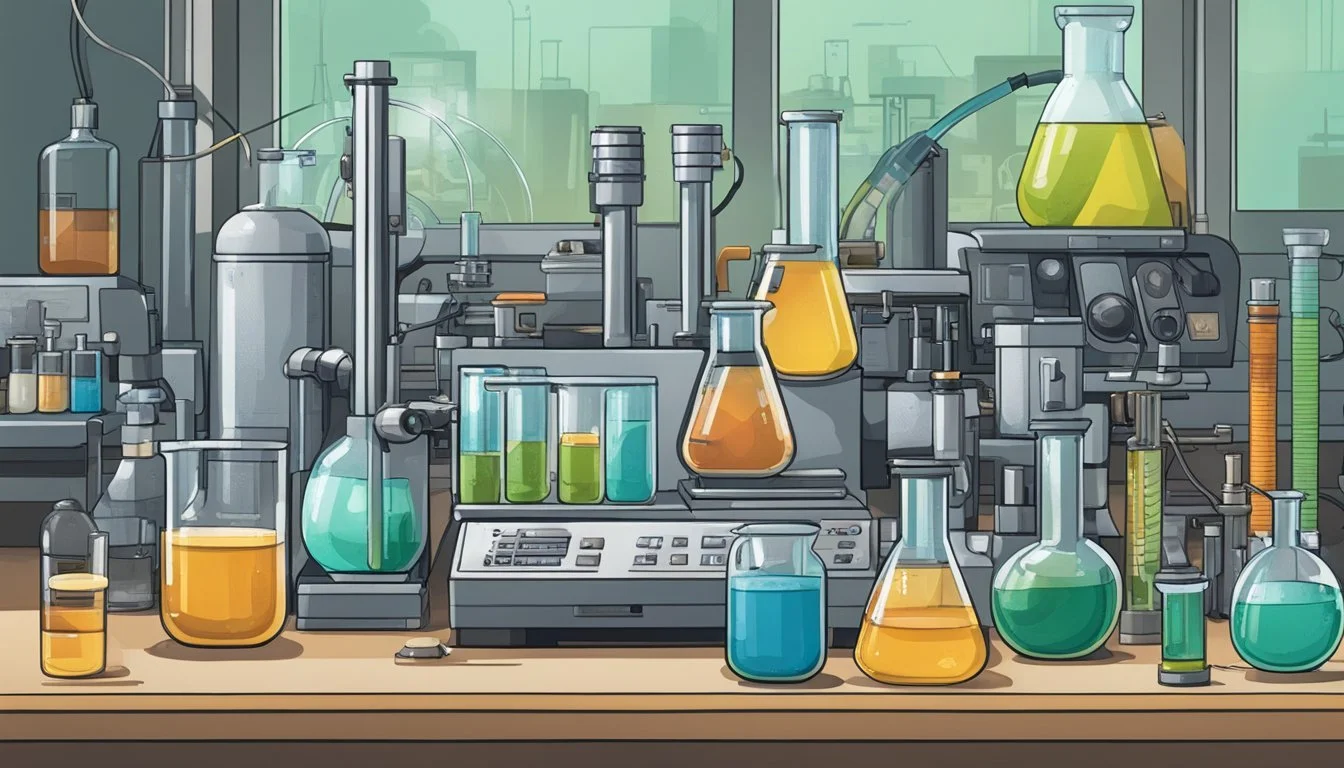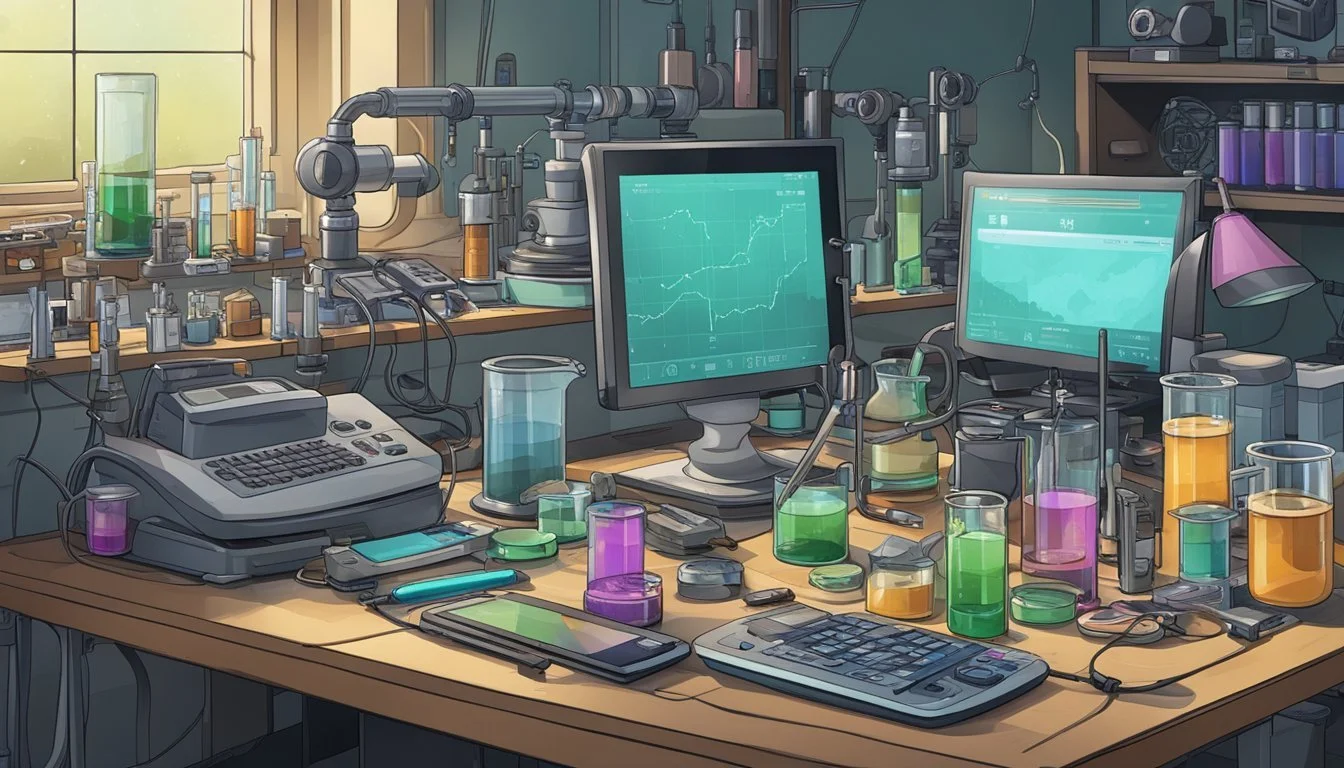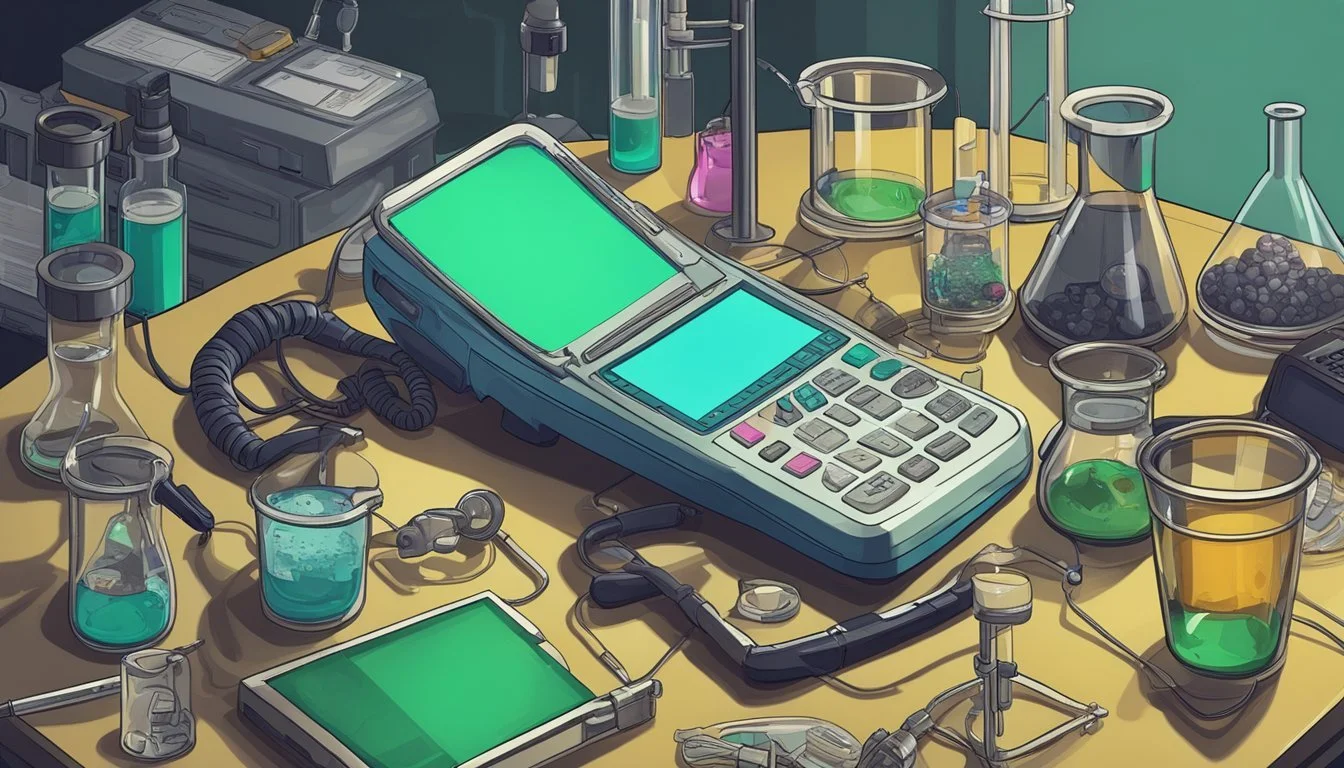Technology in Breaking Bad
From Primitive Devices to Advanced Lab Gear
Breaking Bad, the critically acclaimed drama series created by Vince Gilligan, is set in a world where technology plays a crucial role in both the characters' lives and the unfolding narrative. From the iconic flip phones to sophisticated lab equipment, the show's depiction of technology reflects its early 2000s setting while driving key plot points forward.
The deliberate use of flip phones in Breaking Bad serves multiple purposes, including establishing the time period and facilitating dramatic moments when characters need to quickly dispose of evidence. These outdated devices become a symbol of the characters' attempts to stay off the grid and avoid detection, underscoring the show's themes of secrecy and paranoia.
Beyond communication devices, Breaking Bad showcases an array of scientific equipment essential to Walter White's methamphetamine production. The series meticulously portrays the technical aspects of chemistry, from basic lab glassware to complex instruments. This attention to detail not only adds authenticity to the storytelling but also highlights the intersection of science and criminal enterprise that forms the core of the show's premise.
Characters and Technology
Technology plays a crucial role in shaping the characters and their actions throughout Breaking Bad. From primitive flip phones to sophisticated lab equipment, the show's technological elements reflect the characters' evolution and circumstances.
Walter White's Technological Journey
Walter White's relationship with technology transforms as he delves deeper into the criminal world. Initially, he relies on basic chemistry equipment from his high school lab. As his operation grows, Walt upgrades to more advanced setups.
He starts using a flip phone for clandestine communications, destroying it regularly to avoid detection. Walt's expertise allows him to construct elaborate meth labs, including the superlab beneath Gus Fring's laundry.
His technological prowess culminates in creating a remote-controlled machine gun in his car trunk, showcasing his ingenuity and desperation in the series finale.
Jesse Pinkman: Evolution of Tech Use
Jesse Pinkman's technological journey mirrors his character growth. At first, he struggles with basic lab procedures and equipment. Over time, he becomes more proficient, even replicating Walt's meth formula.
Jesse's phone usage evolves from a personal device to a tool for criminal activities. He learns to use burner phones and becomes cautious about electronic communications.
In later seasons, Jesse adapts to more sophisticated lab setups. His understanding of technology increases, but he remains less tech-savvy than Walt.
Hank Schrader's Law Enforcement Technology
Hank Schrader utilizes various law enforcement technologies in his pursuit of Heisenberg. He employs GPS tracking devices to monitor suspects' movements. Hank uses advanced database systems to cross-reference criminal records and evidence.
His investigative work involves analyzing phone records and tracing calls. Hank also uses surveillance equipment for stakeouts and evidence gathering.
Despite access to these tools, Hank often relies on old-fashioned detective work and intuition to make breakthroughs in the Heisenberg case.
Gustavo Fring and the Cartel's Tech
Gustavo Fring employs cutting-edge technology to run his drug empire. His superlab features state-of-the-art equipment, ensuring high-quality meth production. Gus uses advanced security systems to protect his operations, including hidden cameras and remote monitoring.
He maintains a public persona through his Los Pollos Hermanos franchise, using modern point-of-sale systems and management software as a front.
The cartel, in contrast, often relies on more traditional methods. They gradually adopt newer technologies, like secure communications, to compete with Gus's operation.
The Role of Technology in 'Better Call Saul'
'Better Call Saul' showcases the evolution of technology in the legal and criminal worlds. Jimmy McGill (Saul Goodman) initially struggles with outdated technology in his elder law practice. He gradually embraces modern tools to build his personal injury law business.
The show depicts the transition from paper records to digital databases in law firms. Characters like Chuck McGill resist technological changes, highlighting generational divides.
Criminal elements in 'Better Call Saul' use increasingly sophisticated methods for money laundering and communication, setting the stage for the tech landscape in Breaking Bad.
Communication Technology in 'Breaking Bad'
The series prominently features flip phones as key communication devices. These mobile phones play a crucial role in the characters' illicit activities and interactions throughout the show's timeline.
The Significance of Flip Phones
Flip phones are ubiquitous in "Breaking Bad," serving as disposable tools for criminal communication. Characters frequently use these devices to coordinate drug deals, evade law enforcement, and maintain anonymity. The show depicts characters breaking and discarding flip phones to avoid detection.
This practice, known as using "burner phones," allows for untraceable communication. Walt and Jesse often purchase prepaid phones in bulk, ensuring a constant supply of disposable devices. The simplicity and low cost of flip phones make them ideal for their clandestine operations.
Transition to Smartphones
As the series progresses, a subtle shift in mobile technology becomes apparent. While flip phones remain dominant, smartphones begin to appear in later episodes. This transition reflects the real-world evolution of mobile devices during the show's production years.
Some characters, particularly younger ones, are seen using early smartphone models. Hank utilizes more advanced technology in his investigations, including accessing security camera footage. The gradual introduction of smartphones adds a layer of realism to the show's technological landscape.
Scientific and Lab Equipment
Breaking Bad showcased an array of scientific equipment and lab apparatus essential for methamphetamine production. The show's creators prioritized realism in their portrayal of chemistry and technology.
Chemistry in Methamphetamine Production
Walter White's expertise in chemistry played a crucial role in the methamphetamine production process. The show depicted various chemical reactions and techniques, including reductive amination and the use of methylamine as a precursor.
Key chemicals featured included pseudoephedrine, phosphorus, and hydrochloric acid. The series highlighted the importance of purity in drug synthesis, with Walt's product reaching 99.1% purity.
Safety measures like proper ventilation and protective gear were often emphasized, though sometimes disregarded for dramatic effect.
The Meth Lab and Its Apparatus
The meth lab setups in Breaking Bad evolved throughout the series. Initial makeshift labs in the RV gave way to more sophisticated operations.
Common equipment included:
Round-bottom flasks
Condensers
Buchner funnels
Hot plates and stirrers
Gas chromatographs
The superlab, hidden beneath an industrial laundry, featured state-of-the-art equipment. This included large-scale reactors, distillation columns, and advanced ventilation systems.
Madrigal Electromotive GmbH: Corporate Tech
Madrigal Electromotive GmbH, the German conglomerate, represented high-end corporate technology in Breaking Bad. The company's diverse portfolio included industrial equipment and chemical manufacturing.
Madrigal's labs likely housed cutting-edge analytical instruments such as mass spectrometers and nuclear magnetic resonance (NMR) machines. These tools could be used for quality control and research.
The company's involvement highlighted the intersection of legitimate business and illicit drug production, showcasing how corporate resources could be exploited for criminal enterprises.
Drug Empire and Technology
Walter White's meth empire relied heavily on technology to operate and evade law enforcement. Advanced lab equipment and communications systems played crucial roles in production and distribution.
Tracking and Surveillance in Drug Trade
GPS trackers were used extensively by various parties in Breaking Bad's drug trade. Walt planted a tracker on Jesse's car to monitor his movements. The DEA utilized similar devices to track suspects. Gus Fring employed sophisticated surveillance systems in his industrial laundry front and superlab.
Hidden cameras allowed Gus to keep tabs on his employees and operations. Walt and Jesse also used makeshift surveillance setups to protect their RV lab. Burner phones were essential tools, allowing criminals to communicate while minimizing detection risks.
Money Laundering and Digital Trails
The drug empire's massive profits required creative money laundering schemes. Walt and Skyler purchased the A1A Car Wash as a front business to clean their illicit gains. Digital banking systems posed challenges for laundering large sums discreetly.
Saul Goodman introduced Walt to money laundering experts who utilized shell companies and offshore accounts. These tactics helped obscure the origins of drug money. However, digital financial records still posed risks of leaving traceable patterns.
Cryptocurrency was not prominently featured in the show's timeline, but its rise in the real world has since impacted money laundering methods for criminal enterprises.
Technology's Narrative Impact
Technology plays a pivotal role in Breaking Bad, driving the plot forward and revealing character depths. It serves as both a tool and a symbol throughout the series.
Plot Advancement Through Tech
Flip phones are crucial to the show's narrative progression. Characters use them for covert communications and to orchestrate key events. The RV lab, a mobile meth-cooking facility, propels Walt and Jesse's initial ventures into drug production.
As the story unfolds, more sophisticated equipment enters the picture. The super lab under Gus Fring's laundromat represents a significant technological upgrade. This advancement mirrors Walt's transformation from amateur to professional drug manufacturer.
Security cameras and tracking devices create tension and conflict. They expose vulnerabilities and force characters to adapt their strategies. The DEA's evolving surveillance techniques also push the plot in new directions.
Technology and Character Development
Walt's scientific background is central to his character arc. His expertise with lab equipment showcases his intelligence and resourcefulness. This knowledge becomes a source of pride and power as he navigates the criminal underworld.
Jesse's relationship with technology reflects his growth. Initially reliant on basic chemistry skills, he gradually becomes more proficient with complex equipment. This progression parallels his increasing confidence and competence.
Hank's use of surveillance technology demonstrates his determination as a DEA agent. His reliance on these tools intensifies as he closes in on Heisenberg's identity.
Tech as a Symbol in the Series
The purity of Walt's meth serves as a metaphor for his perfectionism and ego. The blue color, achieved through his superior process, becomes a brand synonymous with quality and danger.
The recurring image of hazmat suits symbolizes the characters' isolation and moral decay. As they don protective gear to cook meth, they also shield themselves from the consequences of their actions.
Disabled technology often represents vulnerability. Crushed phones and dismantled labs signify moments of crisis and loss of control for the characters.
Conclusion: The Evolution of Tech in Breaking Bad
Breaking Bad expertly wove technology into its storytelling fabric, using it to drive character development and plot progression. Flip phones played a central role, serving as disposable tools for the criminal underworld.
The show's creators made deliberate choices in depicting technology. They opted for older flip phones even when the story took place in the late 2000s, creating a timeless feel and practical plot device.
Walter White's transformation from high school chemistry teacher to drug kingpin was mirrored in his use of increasingly sophisticated lab equipment. This technological progression reflected his growing expertise and ambition.
The series showcased a range of scientific tools and processes, from basic chemistry sets to industrial-scale manufacturing equipment. These elements added authenticity and depth to the narrative.
Technology in Breaking Bad wasn't just window dressing - it was integral to character motivations and story arcs. Jesse's journey from small-time dealer to skilled chemist was marked by his growing familiarity with lab techniques.
The show's attention to technological detail extended beyond phones and lab gear. It encompassed surveillance equipment, tracking devices, and even the mechanics of money laundering, all of which played crucial roles in key plot points.





